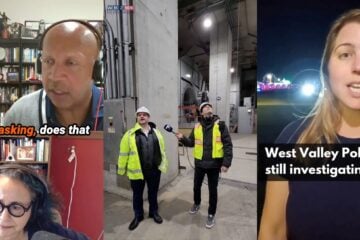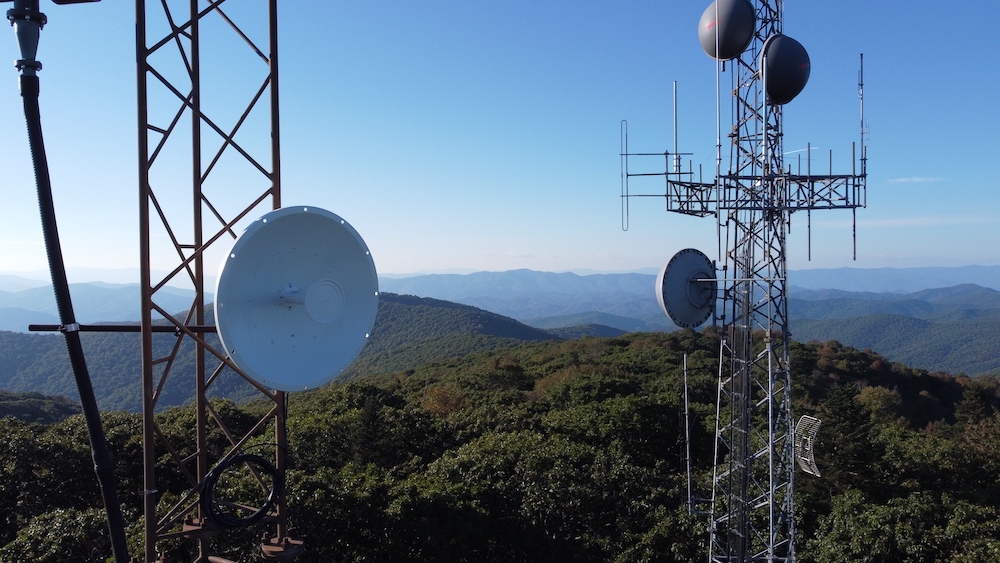Output: Producers swarm a conference, an ‘extreme journalist’ trots the globe, and more
A conference about ideas and creativity provided the latest opportunity for a group of adventurous radio producers to challenge their own inventiveness by producing as much radio as they could in a day and a half.
The six producers behind Longshot Radio reconvened in New York May 3 and 4 to create crowd-sourced, socially networked audio in conjunction with the 99% Conference, where speakers discussed how to put ideas into action. Longshot covered the event in conjunction with WNYC’s Radiolab, whose host, Jad Abumrad, was one of the featured speakers.
Within 30 hours, Longshot emerged with 75 pieces of raw tape gathered at the conference and contributed via Internet by people in 18 cities in the U.S. and Canada. More than 20 people beyond the core producers contributed, and Hsi-Chang Lin composed original music on the spot to score the pieces. Samples of the collaborative effort are at longshotradio.tumblr.com.
Longshot Radio evolved as an offshoot of Longshot Magazine, a similar effort to produce a magazine in two days that debuted last year. Jody Avirgan, a producer at WNYC’s Brian Lehrer Show, suggested to the magazine’s creators that he and fellow producers contribute an audio component to the magazine’s first issue, which focused on the topic of debt.
This time around, Radiolab invited Avirgan and his collaborators to stage an event-based collaboration at the New York Times Building, where the 99% Conference took place. Producers gathered audio from their surroundings and via the Web. “Our goal at Longshot is to give seasoned radio makers a chance to try new things, and those just starting out a way to work on pieces that excite them. And, also, do it all really fast,” they announced on their Tumblr.
Conference-goers contributed personal narratives at a story booth, and online participants posed and answered questions using a widget on Longshot’s blog.
“A woman in Texas asked a question, and an hour later a woman from Hawaii answered,” Avirgan says. “It’s just like people reaching out and having a conversation with each other.”
As the team wrapped up their coverage of the conference, they relocated to a space in Lower Manhattan and to a conference room at WNYC to assemble the program.
The resulting half-hour showcase of the rapid-fire process is available as a podcast and to any stations that might want to air it. Longshot may have a third round when its companion magazine announces plans for a next issue, Avirgan says. He’d like to see Longshot Radio respond to newsier developments and also work harder on getting aired on stations, rather than just focus on the Web as a platform.
“I’m continually amazed at people’s willingness to just work and buy into the spirit of it,” he says. —Mike Janssen
A German travel writer and comedian with a knack for amusing adventures journeyed 25,000 miles over 150 days with an HD minicam and no budget whatsoever.
NETA is now offering his five-part series, How to Travel the World for Free.
“I fell in love with the quirkiness of the shows and host,” said Gayle Loeber, NETA’s director of programming, “and I felt it might attract a younger demographic than many of the traditional travel series on public TV. We’re always on the lookout for something a little different and this fit the bill: funny, fast-paced and really engaging.”
Michael Wigge’s book of the same title spent 10 weeks at No.1 on the German Amazon travel book chart.
Traveling to Antarctica had been a childhood dream, Wigge told Current. He didn’t have cash to pay for the trip, but decided to try to figure out a way to get there without money. “After almost a year of planning, I . . . worked it out.” Before his 2010 adventure to the southernmost continent, Wigge had already been to dozens of countries, even living for a time with the secluded Yanomami tribe in the Amazon rainforest for a documentary. He speaks German, English and Spanish.
Wigge, referred to by the German press as an “extreme journalist,” journeyed through 11 countries en route to Antarctica. With no money for a transatlantic flight, he crossed the ocean by working on a container ship. He walked, hitchhiked and stowed away on trains across deserts, tropics, polar regions and alpine terrain. More than 40 people took him into their homes for free; he asked for food at some 500 shops and restaurants.
Wigge earned money for long-distance transportation by doing odd jobs, including a stint in Las Vegas as a “human sofa”: He charged tired tourists $1 per minute to sit on his back.
The adventurer wanted to experience the trip without a television crew — “to keep the project as authentic as possible,” Wigge said — so he filmed the journey using a mini HD camcorder with a good-quality microphone and a super-wide-angle lens. Editing took three months with his freelance production team of five, who also produce his travel and comedy programs that have aired on German TV. — Dru Sefton
Seattle’s KCTS adopted the Socratic debate format pioneered on TV by the late Fred Friendly.
In the pilot for Public Matters, expert panelists will tackle issues using the probing approach that was a trademark of the former CBS News president and influential pubTV producer. KCTS hopes to present new episodes quarterly.
“This is a nontraditional debate format, with a more hypothetical line of questioning,” said host C.R. Douglas, a longtime Washington State political reporter and analyst.
At the opening of each show, Douglas asks participants to imagine they live in the fictional state of Cascadia, where public policy conundrums such as same-sex marriage and legalized marijuana are accepted practice. Instead of allowing panelists to simply cite facts or voice opinions, Douglas places them into a more personal position, asking, for instance, “What if one person in a same-sex couple who wanted to marry was your son?”
“I think viewers are hungry for this type of program, certainly PBS viewers,” Douglas said. “They have a desire to watch an issue being treated in a more substantive way” than the usual fast-paced cable-news show.
Prerecorded interviews with other experts are interspersed with debate action to provide additional context. — D.S.






